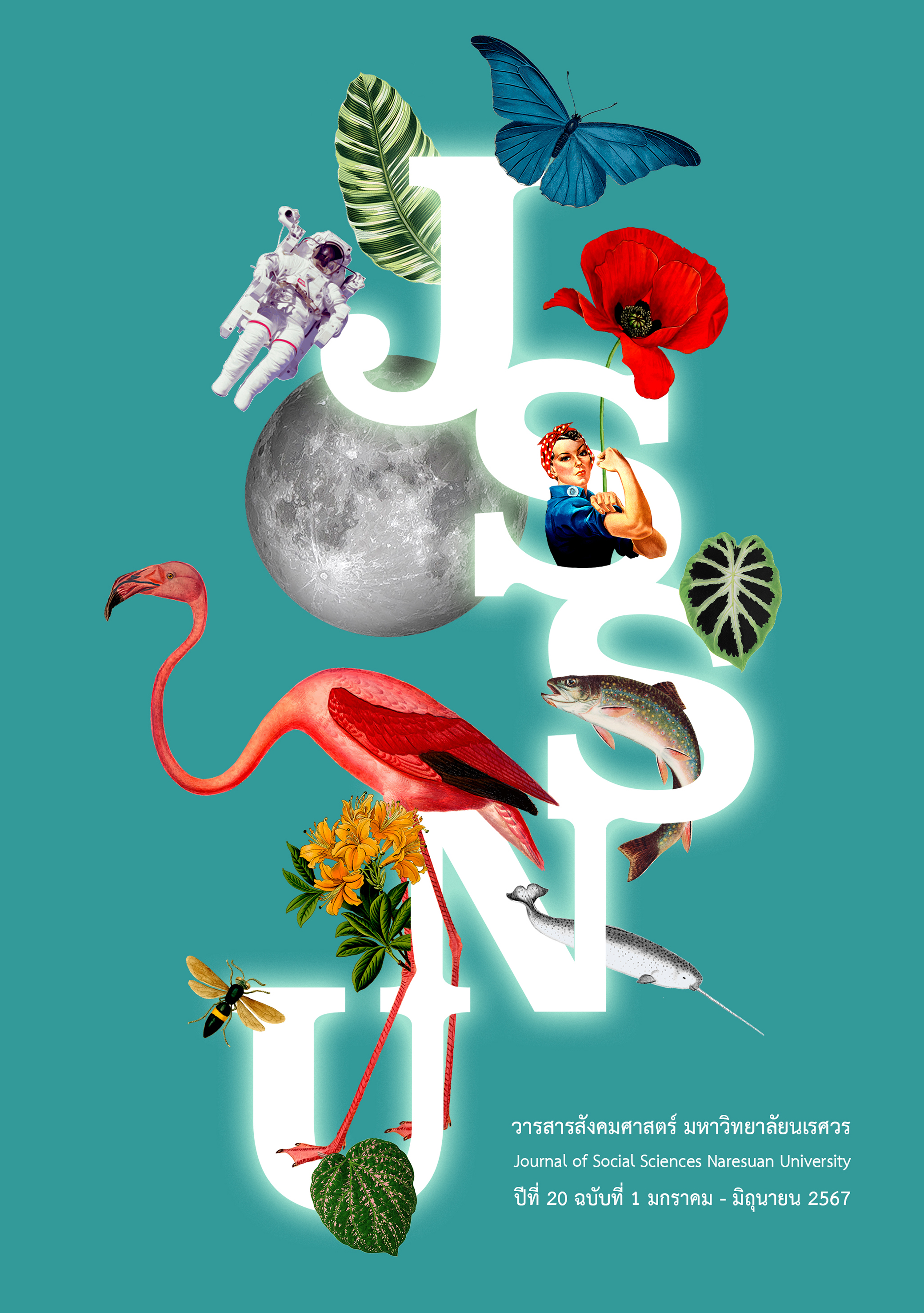Market, Fictitious Commodities, and the Rebellions in Lanna under the Governance of Siam
Main Article Content
Abstract
Following Karl Polanyi’s analysis in his The Great Transformation: The Political and Economic Origins of Our Time, this paper argues that the Phaya Phap rebellion in 1889 and the Ngiao rebellion in 1902 were the consequences of the movement pushed by the Siamese government to establish the self-regulating markets in Lanna. During this period, Siam implemented various policies in order to expedite the commodification process in forest areas, labor, and money referred to by Polanyi as fictitious commodities. As a result, markets that had been embeded as a part of the society were compelled to be disembedded market. This great transformation destroyed the fabric of society which had bonded people with all subjects around them. Both rebellions hence occurred as countermovements aiming at preserving and restoring the eroding social relations.
Downloads
Article Details

This work is licensed under a Creative Commons Attribution-NonCommercial-NoDerivatives 4.0 International License.
References
Bock, C. (2019). Thongthin sayam yuk phraphutthachaoluang (in Thai). [Temples and elephants: Travels in Siam 1881-1882] (6th ed.). (S. Pantarangsi & A. Teekhara, Trans). Nonthaburi: Sripanya.
Boontosang, B. (2007). Phatthana kan kan praptua thang kanmueang khong klum amnat thongthin phailang kan phanuak dindaen khong sayam (phoso 2442-2547): Korani sueksa trakun na chiang mai (in Thai). [Development of political adjustment of local power groups after the Thai Kingdom’s annexation policy (A.D. 1899-2004): A case study of the Na Chiang Mai family] (Master’s Thesis). Chiang Mai: Chiang Mai University.
Chandramart, Luang. (1902). Chotmai thueng somdet phrachaoborommawongthoe kromphraya damrong rachanuphap long wanthi 8 singhakhom 2445 (in Thai) [Letter to Prince Damrong Rajanubhab Dated 8th August 1902]. Bangkok: Office of Literature and History.
Choochart, C. (1979). Kabot phaya phap (prap songkhram): Kabot chaona nai phaknuea (in Thai). [Phaya Phap (Prap Songkram) rebellion: The farmers’ rebellion in the North]. Journal of Social Sciences, 3(2), 53-63.
Choochart, C. (1980). Wiwatthanakan setthakit muban nai phaknuea khong prathet thai Phoso 2394-2475 (in Thai). [The evolution of the village economy in northern Thailand B.E.1851-1932] (Master’s Thesis). Bangkok: Srinakharinwirot University.
Choochart, C. (1984). Kan phalit phuea liang tua-eng nai sangkhom sakdina: Sueksa chapho kan phalit radap muban nai phaknuea khong prathet thai phoso 1839-2475 [Self-sufficient production in a feudal society: A study of village-level production in northern Thailand from B.E.1296-1932]. In C. Natsupa and S. Manarangsan (Eds.), Prawattisat setthakit thai chonthueng phoso 2484 (in Thai). [The history of the thai economy until 1941] (pp. 351-378). Bangkok: Thammasat University.
Damrong Rajanubhab, Prince. (1900). Chotmaihet ratchakan thi 5 (in Thai). [Chronicles of King Rama 5] [microfilm]. Bangkok: National Archive of Thailand.
Goodwin, G. (2020). Fictitious commodification and agarian change: Indigenous peoples and land markets in Highland Ecuador. Journal of Agrarian Change, 21(1), 3-24. doi: https://doi.org/10.1111/joac.12368
Hallett, H. (2021). Thong lanna bon lang chang khong hon ha lalet phoso 2427 (in Thai). [A thousand miles on an elephant in the Shan States]. (S. Parnpo, Trans). Bangkok: River Books.
Langthaler, E., & Schüßler, E. (2019). Commodity studies with Polanyi: Disembedding and re-embedding labour and land in contemporary capitalism. Österreichische Zeitschrift für Soziologie, 44, 217-219. doi: https://doi.org/10.1007/s11614-019-00339-2
Makaew, W. (2021). Yuk thong lanna prawattisat setthakit lae samanchon (in Thai). The golden age of Lanna, economic history and commoners. Bangkok: Matichon.
Ongsakul, S. (2014). Prawattisat lanna (in Thai). [The history of Lanna] (10th ed.). Bangkok: Amarin.
Osborne, T., & Shapiro-Garza, E. (2017). Embedding carbon markets: Complicating commodification of ecosystem services in Mexio’s forests. Annals of the American Association of Geographer, 108(1), 88-105. doi: http://dx.doi.org/10.1080/24694452.2017.1343657
Polanyi, K. (2016). Muea lok phlik phan: Kan patiwat utsahakam chut kamnoet kanmueang lae setthakit yuk patchuban (in Thai). [The great transformation: The political and economic origins of our time] (P. Weerapaspong, Trans.). Nonthaburi: Samesky.
Raksat, Y. (1989). Kan plianplaeng thang kanmueang lae setthakit nai phaknuea khong prathet thai kap kabot ngiao phoso 2445 (in Thai). [The politico-ecomomic change in Northern Thailand and the Shan rebellion A.D.1902] (Master’s Thesis). Bangkok: Chulalongkorn University.
Saesiew, L. (2002). 200 pi phama nai lanna (in Thai). [200 years of Burma in Lanna]. Bangkok: Princess Maha Chakri Sirindhorn Anthropology Centre (Public Organisation).
Samnieng, C. (2021). “Kabot ngiao” kanmueang khong khwam song cham: Prawattisat khabuan kan khlueanwai khong “khon lanna” (in Thai). [“The Ngiao rebellion” The politics of memory: The history of Lanna people’s movement]. Bangkok: Princess Maha Chakri Sirindhorn Anthropology Centre (Public Organisation).
Samnieng, C. (2022). Chao phokha chaona naithun lae khrueakhai thurakit: Kan kotua khong klum thun nai prawattisat setthakit lanna (in Thai). [Monarchs, merchants, farmers, capitalists, and business network: The formation of capital conglomerates in Lanna economic history] (2nd ed.). Bangkok: Siam Publisher.
Setthakul, R. (2009). Prawattisat setthakit watthanatham aeng chiang mai-lamphun (in Thai). [The economic and cultural history of Chiang Mai-Lamphun valley]. Chiang Mai: Silkworm Books.
Srisuriyaratchawaranuwat, Phraya. (1902). Samnao thoralek lap khong phraya si su riya rat wara nu wat long wanthi 27 karakadakhom 2445 (in Thai). [Confidential telegraph of Phraya Srisuriyaratchawaranuwat dated 27th July 1902]. Bangkok: Office of Literature and History.
Surasak Montri, Chao Phraya. (1902a). Chotmai thueng somdet phrachaoborommawongthoe kromphraya damrong ra chanu phap long wanthi 30 karakadakhom 2445 (in Thai). [Letter to Prince Damrong Rajanubhab dated 30th July 1902]. Bangkok: Office of Literature and History.
Surasak Montri, Chao Phraya. (1902b). Chotmai thueng somdet phrachaoborommawongthoe kromphraya damrong ra chanu phap long wanthi 28 singhakhom 2445 (in Thai). [Letter to Prince Damrong Rajanubhab dated 28th August 1902]. Bangkok: Office of Literature and History.
Surasak Montri, Chao Phraya. (1902c). Chotmai thueng somdet phrachaoborommawongthoe kromphraya damrong ra chanu phap (in Thai). [Letter to Prince Damrong Rajanubhab]. Bangkok: Office of Literature and History.
Tantikul, N. (2003). Wirakam phaya phap (nan te cha haeng khwaeng nong chom san sai) (in Thai). [Phaya Phap’s bravery (Nan Techa of Sansai village)]. Chiang Mai: Mingkwan.
Visetphuthorn, Luang. (1902). Chotmai thueng senabodi krasuang mahatthai (in Thai). [Letter to the Minister of Interior]. The Ngiao rebellion archive (Collection of Historical Archives no. 75). Bangkok: Office of Literature and History.


